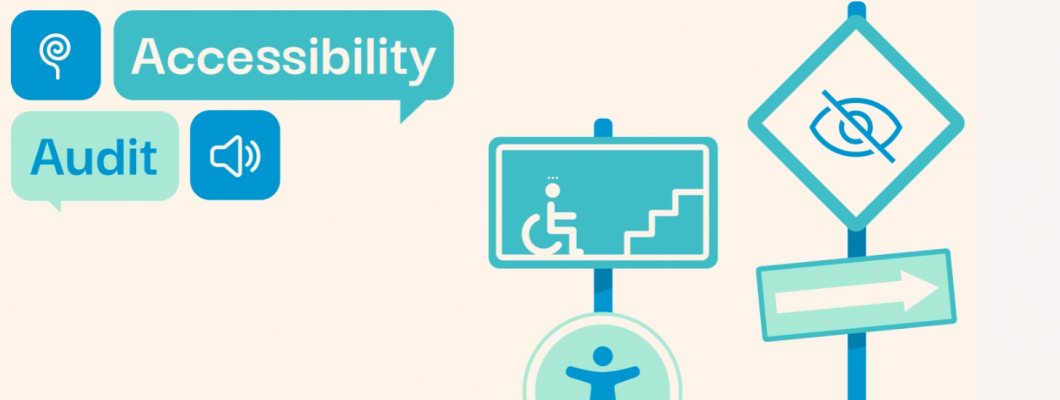
In today’s digital-first world, where websites serve as gateways to shopping, learning, and daily interaction, making your site accessible to all users is not just a best practice; it’s a necessity. Accessibility goes beyond accommodating users with disabilities; it’s about designing inclusive experiences that benefit everyone, regardless of ability.
This is where accessibility audits become essential. An accessibility audit is a comprehensive evaluation of your website to uncover barriers that may prevent people with visual, auditory, motor, or cognitive impairments from fully engaging with your content. These audits ensure compliance with global standards like the Web Content Accessibility Guidelines (WCAG) and legal mandates such as the Americans with Disabilities Act (ADA).
But it’s not just about meeting legal requirements. Accessibility audits foster inclusivity, enhance usability, improve SEO, and demonstrate your brand’s commitment to digital equality. They help identify issues in design, navigation, and content that could hinder user experience.
In this blog post, we’ll explore what accessibility audits entail, why they matter, how to conduct them effectively, and the best practices for maintaining an inclusive and compliant web presence. Whether you manage a personal blog or a global e-commerce platform, accessibility should be a core part of your strategy.
What Is an Accessibility Audit?
An accessibility audit is a systematic evaluation of your website’s design, content, and code to determine how well it adheres to recognized accessibility standards. The goal is to uncover barriers for users with a wide range of disabilities, including visual, auditory, motor, and cognitive impairments.
Audits can be manual, automated, or a combination of both:
Automated tools scan your site for issues quickly (but may miss context-specific or complex problems).
Manual testing by experts provides a more in-depth review and often involves assistive technologies like screen readers.
Why Accessibility Matters
1. Legal Compliance
Regulations like the ADA in the U.S., the Accessibility for Ontarians with Disabilities Act (AODA) in Canada, and the European Accessibility Act mandate that websites be accessible. Failure to comply can result in lawsuits, fines, or reputational damage.
2. Inclusivity
Roughly 15% of the world’s population lives with some form of disability. That’s over a billion people potentially excluded if your site isn’t accessible. Inclusive design ensures everyone—regardless of ability—can engage with your content.
3. Improved User Experience
Many accessibility practices improve usability for everyone. Clear navigation, readable fonts, and keyboard-friendly interactions help all users, not just those with disabilities.
4. SEO Benefits
Accessible websites tend to be more SEO-friendly. For instance, using proper heading structures, alt text for images, and descriptive link text also helps search engines understand your content better.
Key Areas to Audit
1. Perceivable Content
Is there sufficient color contrast?
Are images labeled with meaningful alt text?
Are videos captioned or transcribed?
2. Operable Interface
Can all features be accessed via keyboard alone?
Are buttons and links large enough and well spaced?
Is there a visible focus indicator when tabbing?
3. Understandable Information
Are headings and labels descriptive and logical?
Is the language simple and readable?
Are form errors easy to identify and fix?
4. Robust Technology
Is your site compatible with screen readers and assistive tech?
Do semantic HTML and ARIA (Accessible Rich Internet Applications) attributes convey meaning?
Are dynamic elements (like modals or dropdowns) accessible?
How to Conduct an Accessibility Audit
Step 1: Define Your Scope
Decide whether you want to audit your entire site or specific pages. Focus on high-traffic or conversion-critical areas first (e.g., homepage, contact forms, checkout flows).
Step 2: Use Automated Tools
Tools like:
WAVE by WebAIM
axe DevTools
Lighthouse (Chrome DevTools)
Siteimprove
These can help identify common issues like missing alt text, low contrast, or improper heading structures.
Step 3: Conduct Manual Testing
Automated tools miss nuance. Manually check:
Keyboard navigation
Screen reader compatibility (using NVDA or VoiceOver)
Error message clarity
Dynamic content interactions
Step 4: Review Against WCAG Standards
Compare findings with the latest WCAG 2.1 or 2.2 guidelines. These standards are organized around four principles—Perceivable, Operable, Understandable, and Robust (POUR).
Step 5: Document Issues
Create a report with:
A summary of findings
Screenshots or code snippets
WCAG reference codes
Severity ratings (Critical, High, Medium, Low)
Suggested fixes
Step 6: Fix and Re-Test
Work with your dev team or designers to implement changes, then re-test to ensure all issues are resolved.
Best Practices for Accessibility
Use semantic HTML: Tags like <header>, <main>, and <nav> provide meaningful structure for assistive tech.
Provide alt text: Describe images clearly, especially for key visuals or infographics.
Avoid relying on color alone: Use icons, patterns, or text labels in addition to color for key info.
Ensure keyboard navigation: All actions should be doable without a mouse.
Label form fields clearly: Include instructions and error feedback.
Support screen readers: Use ARIA attributes carefully and test with actual screen reader software.
Test regularly: Accessibility isn’t a one-time task. Make audits part of your design and development workflow.
Accessibility Tools & Resources
WAVE (wave.webaim.org) – Evaluates page accessibility visually.
Axe by Deque – Browser extension for developers.
NVDA (NonVisual Desktop Access) – Free screen reader for Windows.
Color Contrast Analyzer – Tests color contrast ratios.
WCAG Quick Reference – Simplifies WCAG criteria by category.
Conclusion
An accessible website isn’t just about compliance; it’s a reflection of your brand’s values. Conducting accessibility audits ensures your digital presence is inclusive, usable, and compliant with legal standards. It also enhances user experience, supports SEO, and fosters long-term trust with all your audiences.
Start small if you need to focus on your homepage, forms, or key pages. Over time, integrate accessibility into your entire design and development process.

Leave a Comment